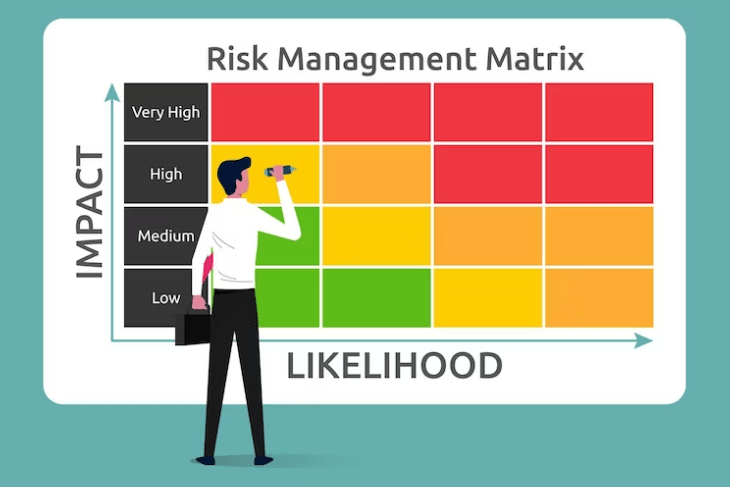Risk Assessment Matrix: A Step-by-Step Guide
Introduction: Understanding the Importance of Risk Assessment Matrix
Risk is an inherent part of any business endeavor. However, how you manage and mitigate those risks can significantly impact your success. One essential tool in the realm of risk management is the Risk Assessment Matrix. In this comprehensive guide, we will take you through the step-by-step process of creating and using a Risk Assessment Matrix to make informed decisions, prioritize risks, and ultimately enhance your business’s resilience.

Step 1: Identify and Define Your Risks
The first step in creating a matrix for Risk Assessment is to identify and define the specific risks your business faces. These risks can vary widely and may include financial, operational, strategic, or compliance-related challenges. To compile a comprehensive list, consider conducting brainstorming sessions, reviewing historical data, and seeking input from various departments and stakeholders within your organization.
Step 2: Assess Probability and Impact
Once you’ve identified the risks, the next step is to assess their probability and impact. Use a scale, such as low, medium, or high, to determine how likely each risk is to occur and what the potential consequences would be if it does. This step helps you prioritize risks and allocate resources more effectively.
Step 3: Create the Risk Assessment Matrix
Now it’s time to construct your Risk Assessment. This matrix typically consists of a grid, with one axis representing the likelihood of a risk occurring and the other axis showing the impact of the risk. Each intersection in the grid is assigned a risk rating, often color-coded for quick reference. For instance, a low likelihood and low impact risk might be labeled as “low risk,” while a high likelihood and high impact risk would be labeled “high risk.”
Step 4: Develop Risk Mitigation Strategies
With your Risk Assessment in hand, it’s time to move on to developing risk mitigation strategies. For each high and medium-risk area, create specific action plans that outline how your business will address and mitigate the risks. These strategies may involve process improvements, financial safeguards, or contingency planning.
Step 5: Implement and Monitor
Put your risk mitigation strategies into action and continuously monitor their progress. Regularly update your Risk Assessment Matrix as new risks emerge or existing risks evolve. Be flexible and adaptable in your risk management approach.
Step 6: Communicate and Educate
Effective communication and education are vital in risk management. Ensure that your employees, stakeholders, and decision-makers are well-informed about the risks, the mitigation strategies in place, and their roles in risk management.
Embrace Proactive Risk Management
In today’s dynamic business environment, proactive risk management is critical. A Risk Assessment Matrix is a powerful tool that can help businesses navigate uncertainties and make informed decisions. By following this step-by-step guide, you can create and use a Risk matrix to enhance your business’s resilience, protect your investments, and optimize your decision-making processes.
Remember, risk management is an ongoing process, and a well-constructed Risk Matrix is a valuable asset for any business looking to thrive in a rapidly changing world.
Conclusion: Embrace the Digital Revolution in Risk Management
The adoption of a digital solution for your Risk Assessment Matrix can transform the way your business manages and mitigates risks. It streamlines the process, improves accuracy, and provides real-time insights, all of which are vital for modern businesses seeking to thrive in a dynamic environment.
As the digital revolution continues, embracing digital risk management tools is not just an option; it’s a necessity for organizations looking to stay competitive and resilient. By following this step-by-step guide, you can harness the power of digitalization to enhance your risk management practices and make more informed decisions for the future of your business.

